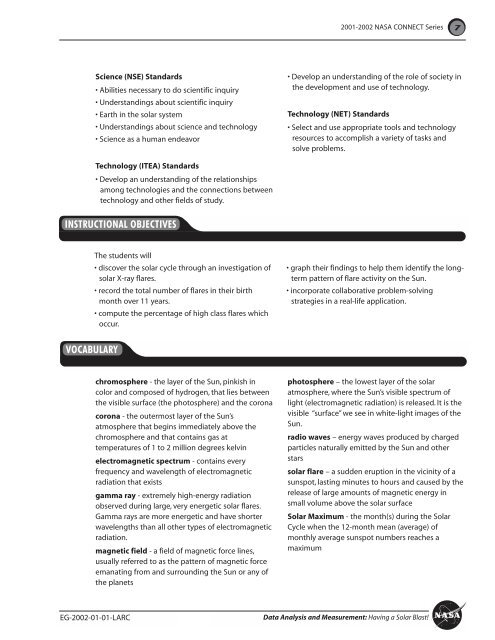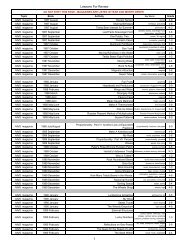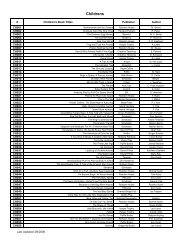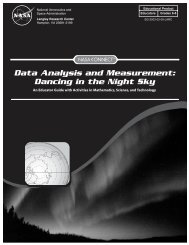Data Analysis & Measurement: Having a Solar Blast pdf - ER - NASA
Data Analysis & Measurement: Having a Solar Blast pdf - ER - NASA
Data Analysis & Measurement: Having a Solar Blast pdf - ER - NASA
You also want an ePaper? Increase the reach of your titles
YUMPU automatically turns print PDFs into web optimized ePapers that Google loves.
2001-2002 <strong>NASA</strong> CONNECT Series<br />
7<br />
Science (NSE) Standards<br />
• Abilities necessary to do scientific inquiry<br />
• Understandings about scientific inquiry<br />
• Earth in the solar system<br />
• Understandings about science and technology<br />
• Science as a human endeavor<br />
• Develop an understanding of the role of society in<br />
the development and use of technology.<br />
Technology (NET) Standards<br />
• Select and use appropriate tools and technology<br />
resources to accomplish a variety of tasks and<br />
solve problems.<br />
Technology (ITEA) Standards<br />
• Develop an understanding of the relationships<br />
among technologies and the connections between<br />
technology and other fields of study.<br />
INSTRUCTIONAL OBJECTIVES<br />
The students will<br />
• discover the solar cycle through an investigation of<br />
solar X-ray flares.<br />
• record the total number of flares in their birth<br />
month over 11 years.<br />
• compute the percentage of high class flares which<br />
occur.<br />
• graph their findings to help them identify the longterm<br />
pattern of flare activity on the Sun.<br />
• incorporate collaborative problem-solving<br />
strategies in a real-life application.<br />
VOCABULARY<br />
chromosphere - the layer of the Sun, pinkish in<br />
color and composed of hydrogen, that lies between<br />
the visible surface (the photosphere) and the corona<br />
corona - the outermost layer of the Sun’s<br />
atmosphere that begins immediately above the<br />
chromosphere and that contains gas at<br />
temperatures of 1 to 2 million degrees kelvin<br />
electromagnetic spectrum - contains every<br />
frequency and wavelength of electromagnetic<br />
radiation that exists<br />
gamma ray - extremely high-energy radiation<br />
observed during large, very energetic solar flares.<br />
Gamma rays are more energetic and have shorter<br />
wavelengths than all other types of electromagnetic<br />
radiation.<br />
magnetic field - a field of magnetic force lines,<br />
usually referred to as the pattern of magnetic force<br />
emanating from and surrounding the Sun or any of<br />
the planets<br />
photosphere – the lowest layer of the solar<br />
atmosphere, where the Sun’s visible spectrum of<br />
light (electromagnetic radiation) is released. It is the<br />
visible “surface” we see in white-light images of the<br />
Sun.<br />
radio waves – energy waves produced by charged<br />
particles naturally emitted by the Sun and other<br />
stars<br />
solar flare – a sudden eruption in the vicinity of a<br />
sunspot, lasting minutes to hours and caused by the<br />
release of large amounts of magnetic energy in<br />
small volume above the solar surface<br />
<strong>Solar</strong> Maximum - the month(s) during the <strong>Solar</strong><br />
Cycle when the 12-month mean (average) of<br />
monthly average sunspot numbers reaches a<br />
maximum<br />
EG-2002-01-01-LARC<br />
<strong>Data</strong> <strong>Analysis</strong> and <strong>Measurement</strong>: <strong>Having</strong> a <strong>Solar</strong> <strong>Blast</strong>!
















